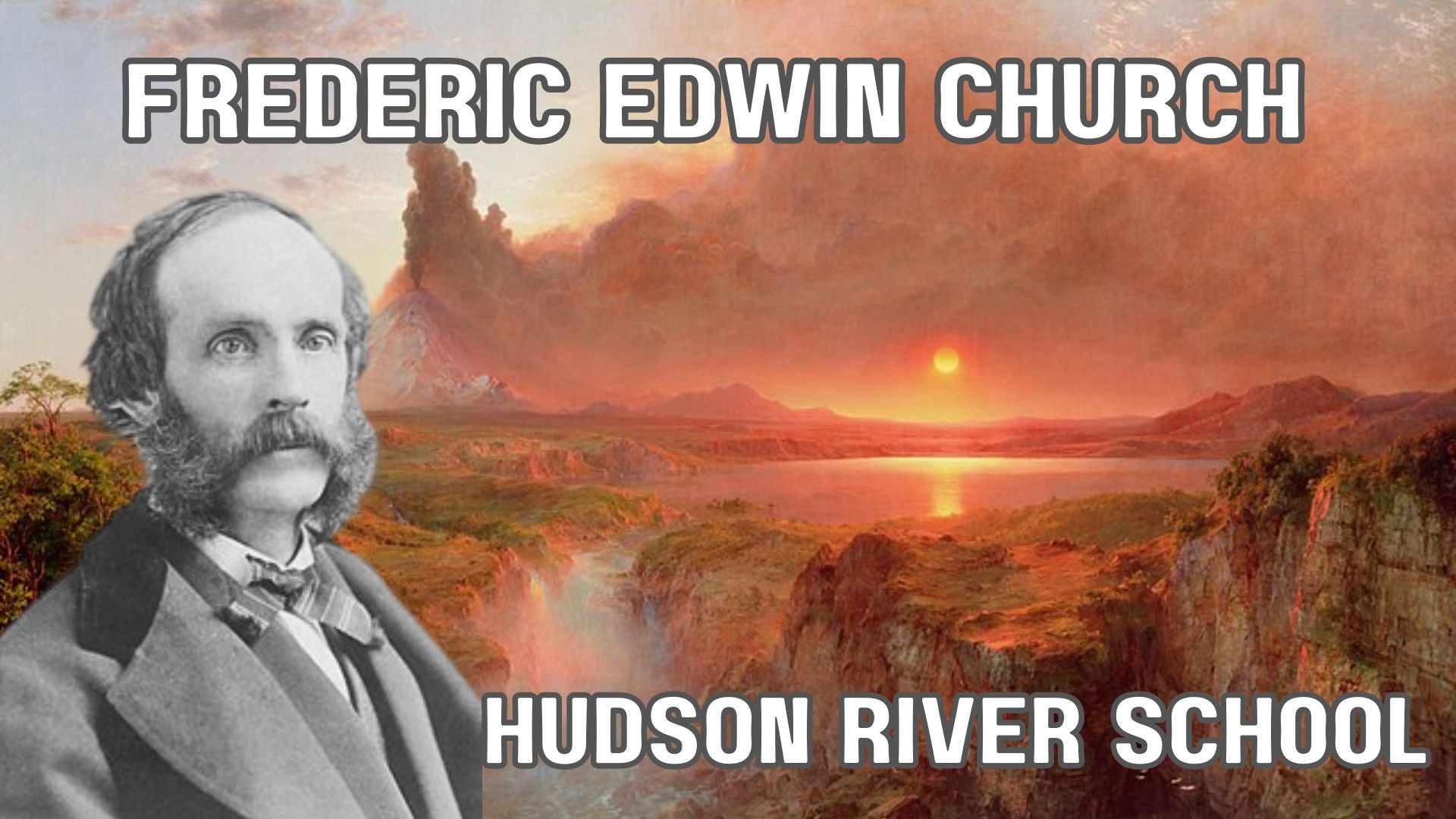Table of Contents:[hide]
Frederic Edwin Church, a prominent figure in American landscape painting, left an indelible mark on the art world with his stunning portrayals of nature's grandeur. Born in Hartford, Connecticut, on May 4, 1826, Church's journey as an artist began at a young age, nurtured by his family's support and his own innate talent. Let's delve into the life, style, influences, and lasting legacy of this renowned artist.
Biography
Beginnings
Frederic Edwin Church's artistic journey was influenced by his familial ties and early exposure to the arts. Descended from a lineage of pioneers, Church's upbringing in a financially comfortable environment facilitated his pursuit of artistic endeavors. His introduction to landscape painting under the tutelage of Thomas Cole marked the beginning of a remarkable artistic journey.
Style and Influences
Romanticism and the Hudson River School
Church's style was deeply rooted in the Romantic tradition, which celebrated the awe-inspiring beauty of nature. As a key figure in the Hudson River School movement, Church's works echoed the school's focus on pastoral settings and the American landscape's vastness. Influenced by figures like Thomas Cole and the writings of Alexander von Humboldt and John Ruskin, Church's paintings embodied meticulous detail and a reverence for nature's splendor.
Career
Artistic Exploration
Church's artistic exploration took him on extensive travels across America and beyond. From the majestic landscapes of the Hudson Valley to the awe-inspiring vistas of South America, Church captured the essence of diverse landscapes with unparalleled skill. His expeditions to regions like Ecuador and the Andes inspired some of his most iconic works, including "The Heart of the Andes" and "Cotopaxi."
Family, Later Travels, and Olana
Personal Life and Architectural Legacy
Beyond his artistic pursuits, Church's personal life was marked by tragedy and triumph. Despite facing personal loss, including the untimely deaths of two children, Church found solace in his family and his passion for art. His creation of Olana, a Persian-inspired mansion nestled in the Hudson Valley, stands as a testament to his architectural vision and enduring legacy.
Legacy
Rediscovery and Recognition
While Church's fame waned in the years following his death, a resurgence of interest in his work occurred in the 20th century. Exhibitions and scholarly research revived appreciation for Church's contributions to American art, solidifying his status as a pioneering figure in landscape painting. Today, institutions like the Olana State Historic Site preserve his artistic legacy for future generations to admire and study.
Frederic Edwin Church FAQ's
-
Who was Frederic Edwin Church?
- Frederic Edwin Church was an American landscape painter born in Hartford, Connecticut, on May 4, 1826. He was a central figure in the Hudson River School of American landscape painters and gained fame for his realistic and detailed portrayals of nature.
-
What is the Hudson River School?
- The Hudson River School was an American art movement that flourished in the mid-19th century. It focused on landscape painting, particularly depicting the natural beauty of the Hudson River Valley and surrounding areas. Frederic Edwin Church was one of its most prominent members.
-
What were Church's major influences?
- Church was influenced by the Romantic tradition, which emphasized the beauty and grandeur of nature. He was particularly inspired by his teacher, Thomas Cole, as well as by the writings of Alexander von Humboldt and John Ruskin, who advocated for the close observation and portrayal of nature in art.
-
Where did Church travel for artistic inspiration?
- Church embarked on numerous painting expeditions throughout his career. He traveled extensively across America, visiting locations such as the Hudson Valley, the White Mountains, and the Andes in South America. These travels provided him with the diverse landscapes that became the subjects of his paintings.
-
What are some of Church's most famous works?
- Some of Frederic Edwin Church's most famous works include "The Heart of the Andes," "Niagara," "Cotopaxi," and "Twilight in the Wilderness." These paintings are celebrated for their meticulous detail, dramatic lighting, and panoramic views that capture the beauty of the natural world.
-
What was Olana?
- Olana was the Persian-inspired mansion and estate that Church designed and built in the Hudson Valley near Hudson, New York. It served as his home and studio and is now preserved as the Olana State Historic Site. The estate showcases Church's architectural vision and provides insight into his personal life.
-
What is Church's legacy in American art?
- Frederic Edwin Church's legacy in American art is significant. He played a pivotal role in popularizing landscape painting and contributed to the development of a distinct American artistic identity. His works continue to be admired for their beauty and craftsmanship, and he remains an influential figure in the history of American art.
Frederic Edwin Church Prints and Canvas Panels
Fine art prints and ready to hang gallery quality canvas panels of Frederic Edwin Church paintings are avaiable in a range of sizes with fast worldwide delivery.
Related Articles







